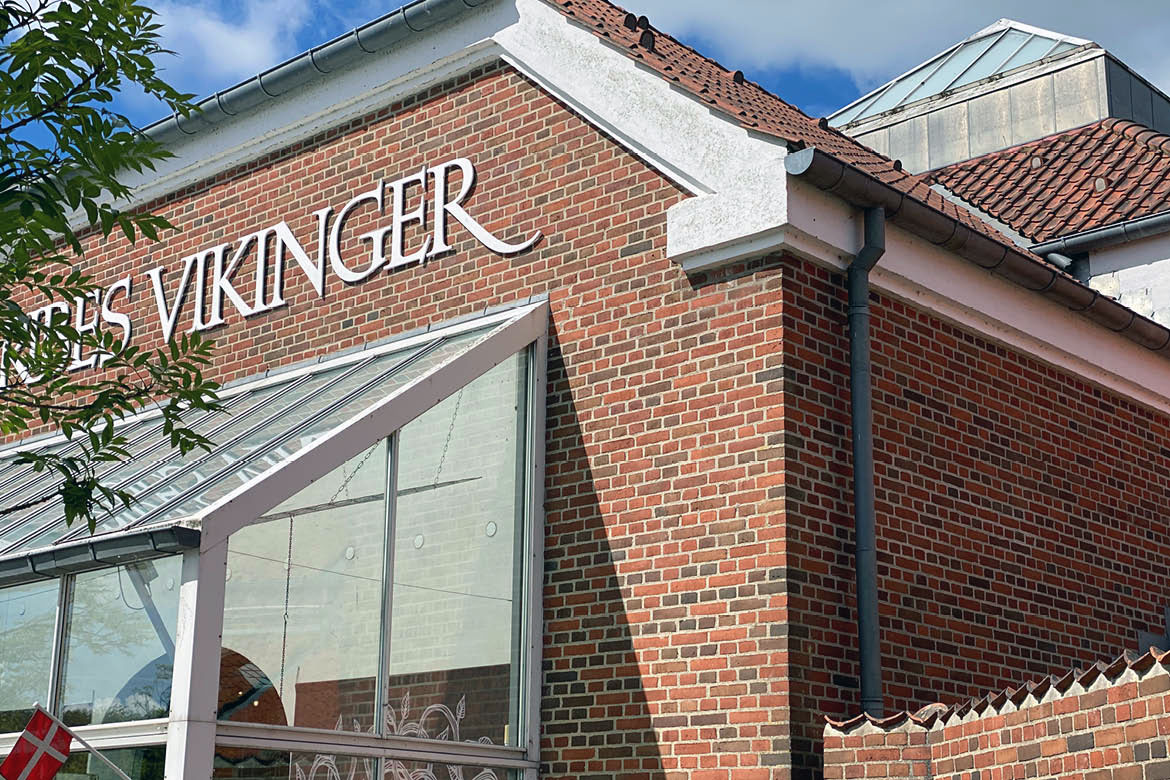Ribes Vikinger was created thanks to a generous grant from the Villum Kann Rasmussen Foundation in 1993. The Municipality offered that the city’s former electricity plant and gas plant site could be used as a building site, while the County undertook to build Odins Plads as both a roundabout and parking lot in front of the future museum.
The building of the former electricity plant has been preserved in the museum. It is a beautiful classicist building with a facade facing Dagmarsgade. It was built in 1926 according to drawings by the Ribe architect Axel Hansen (1885-1935). To this, architect Niels Frithiof Truelsen (b. 1938) has added a new, large building, which fills the building site between Dagmarsgade and Sct. Nicolaj Gade. The external design language of the extension follows that of the electricity plant with a red tile roof and red brick masonry with white painted details.
Before the construction, an archaeological excavation was carried out on the place where the new buildings and the roundabout would be placed. This was the site of the city’s gas works, built in 1862, and the area was both very disturbed and polluted.
The archaeologists had two big surprises: firstly, the excavation revealed a number of very rich, large waste pits from Ribe’s oldest period, the 7th century.
Secondly, archaeologists unexpectedly also found a large 12th-century moat that was filled in, surrounding a large rectangular moat of 60 x 100 m, indicating that a 12th-century castle stood here. Unfortunately, the surface of the castle bench has been completely excavated, but it is possible that the site was the king’s first farm in Ribe. The find is an example of what archaeological sensations the strata beneath Ribe can still produce.
The main entrance’s glass section facing Odins Plads leads the visitor into a central axis where the museum shop, ticket office and café area are located. To the right is the entrance to the permanent exhibitions, which are divided into two main tracks: the Viking Age and the Middle Ages.
A total of around 14,000 objects are exhibited here, which primarily originate from excavations in Ribe City.
The two tracks were created by Stig Jensen and Per Kristian Madsen, respectively, with help from the museum’s other staff. Exhibition architecture, design and coordination are by Søren Gottfred Petersen and Flemming Bau – layout, watercolours, colour scheme and the museum’s logo are by Flemming Bau.

From the time before the power station was built. The extensive area between the river and station building is now a museum and garden. Photo: Museum of Southwest Jutland

Ribe Old Power Station from behind, where ‘Krüger’s Garden’ may still be seen.






